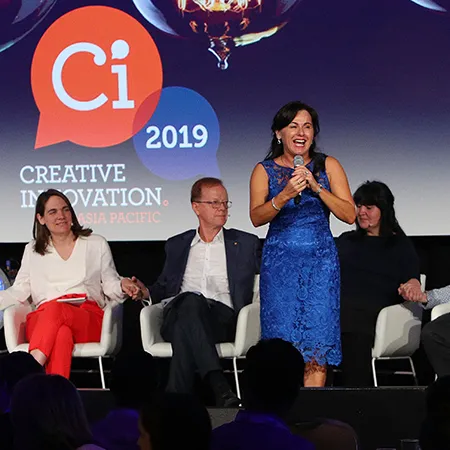(An edited version of this article was published in The Australian, 8th January 2015)
Once-powerful industries retailing, print and TV media, music publishing, the post, insurance, even governments to name a few, are in a state of upheaval and strategic uncertainty as they grapple with swarms of nimble, low-cost digital disruptors stealing chunks of their business or rendering them increasingly irrelevant. It’s not surprising that many are predicting that 2015 will be the year of disruption.
The most disturbing aspect of the crisis gripping large swathes of traditional industry is that they could see the online challenge coming, and took steps to try to meet the challenge.
None could predict the extent to which their old business models would be reduced to a Darwinian struggle for survival and the speed with which it would happen, in print media and retail in particular.
Disruption is not new in this era of six-month product lives and left-of-field start up business models that have no fear or respect for established businesses. Even the start-ups of 10 years ago are coming under threat from newer, more agile competitors, as demonstrated by the challenge by upstart jobs website Nvoi to Australia’s biggest online jobs site SEEK, itself the disruptor that siphoned off large slabs of print classified advertising.
The development of digital technology in the mid-1990s to allow large packets of data to be sent down phone lines and cables, regarded as a curiosity at first, has opened the door to an extraordinary period of entrepreneurship. The start-up literally begins with an idea. With no significant costs like rents, staff, bills or elaborate planning models, they can experiment and the cost of failure is low. The ability to move on with fresh ideas and lessons learned is strong. Their main weakness is that ultimate success attracts a new breed of disruptors to steal the lunch they stole from the old model businesses, as per the Nvoi example.
Consumers have been empowered like never before. For established businesses, either under threat or awaiting a challenge from a digital business model, the clearer thinkers are asking themselves:
Is it a threat to my industry or profession, a problem to be managed – or an opportunity to be seized? The challenge is to see it coming, and to respond in time.
The smarter media operators in Australia and elsewhere, for instance, invested in the online businesses they knew would attack their print advertising businesses. What they lost from print they gained in the sharply rising share price of the disruptor.
Disruption is undoubtedly the greatest commercial and cultural threat all organisations will face in the foreseeable future. The changes driven by digital technology and globalisation don’t discriminate, and they are remorseless. Yet, perversely, once understood, the threat of disruptive change from outside can be turned to a huge competitive advantage with the opportunities that flow from that understanding.
All players, from established businesses to start-ups have access to the internet which has 19 billion pieces of information connected to it, according to Cisco Engineering. Cisco estimates that in six years this figure will rise to 37 billion.
For the savvy established business, not being able to experiment and thus risk failure like the start-up, the key is to become more nimble by reducing costs. The start-ups target any business or profession where costs are high. One advantage established businesses have over the start-up (for how long this will last is open to conjecture) is that they can use globalisation to cut costs. The Philippines, where wages are one-tenth Australia’s, has become a key source off offshore labour for financial groups like Macquarie, which has its second biggest office in that country for back-office functions only. Telstra employs tens of thousands of low-wage staff in Manila. Any function where face-to-face contact is not required is being sent offshore.
In general motor insurance, profitability has traditionally been driven by scale combined with effective cost and risk management of likelihood of accidents. The aggregators like iSelect and BudgetDirect are already arbitraging between the insurers forcing them to cut premiums, but another threat awaits: the onset of the driverless car being developed by Tesla and Google. As these vehicles become more common over the next decade or probably less, there will be fewer cars on the road (as cars become efficiently utilized across families and groups) and some estimates predict a 95 per cent reduction in accidents with human error largely removed. As a consequence both the number of policies and premium levels will be much lower. Are our large insurance groups preparing for this? The law and financial services too are vulnerable to attack from low-cost digital models.
And perhaps the greatest disruptive force of all might not be that far away with rapid advances in behavioural robotics promising to usher in a world of machines to replace humans. How will society adapt to the disruption they will bring to the way we work and do business?
It is critical for leaders from all sectors to do some serious crystal ball gazing to work out what they need to do proactively and defensively to best manage these future threats and opportunities.
*Tania de Jong is a soprano, entrepreneur and founder of the forthcoming Creative Innovation 2015 Asia Pacific “From disruption to sustainable growth” event from 23-25 March 2015 in Melbourne, at which more than 40 of the world’s leading thinkers, futurists, disruptors and technology experts will speak and present master classes.www.ci2015.com.au
To inspire you and your team’s creative juices, please watch and share my recent TEDxMelbourne talk viewed by over 17,000 people so far!:) We are changing the world, one voice at a time!
And follow me on Twitter @TaniadeJong
Creative Innovation 2015 Asia Pacific: From Disruption to Sustainable Growth (Ci2015) will give you the chance to understand disruption, to innovate in response, or take the initiative and be a disruptor. Learn from the who’s who of global thinkers and innovators at Ci2015, 23-25 March 2015 at Sofitel Melbourne On Collins. Ci2015 will feature 40+ global innovators, leaders and disruptors in a program including 15 Master Classes, Deep Conversations, two action-packed Conference days, a Gala Dinner with a grand disruptive debate, Artists-in-Residence and networking opportunities. The theme for the debate featuring a number of the keynote speakers and audience is: ‘How will we humans compete with machines that compose, diagnose or smell a rose?’
Deep Conversation tickets start at $125 and Master Classes at $220. Please see Program at a Glance for more information.
We are delighted to offer an additional 10% discount to my LinkedIn network and followers. Please use the password “Growth” when registering for conference packages.
Please see more about the Ci2015 speakers and the program at a glance.
Don’t miss this stimulating, inspiring, educational and important event. Please would you also be so kind as to share this information onto your colleagues and other networks? We look forward to seeing you there.






